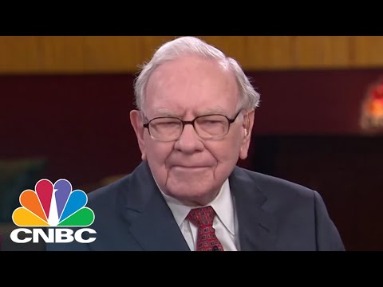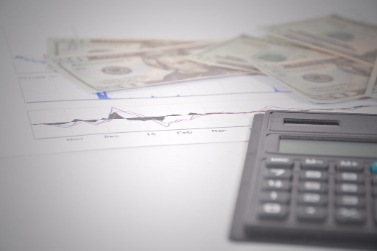Invest In Etf
Table of Contents Heading
- Transferring Accounts To Schwab
- International Etfs
- Top Entertainment & Leisure Etf
- Invest Commission
- How To Invest In Etfs: A Beginners Guide
- How Etf Arbitrage Works
In contrast, ETFs are traded throughout the day at the current market price like a stock, and they may cost slightly more or less than the NAV. Like mutual funds, ETFs offer investors diversified exposure to a portfolio of securities, such as stocks, bonds, commodities and real estate. An exchange traded fund is an investment fund that invests in a basket of stocks, bonds, or other assets. Investors are drawn to ETFs because of their low price, tax efficiency and ease of trading.
You can buy an ETF for the price of 1 share—commonly referred to as the ETF’s market price. That price could be as little as $50 or as much as a few hundred dollars, depending on the ETF. You can invest in a Roth or traditional IRA as long as you are employed and earning income. IRAs offer a great way to save for retirement even if you’re already investing in a 401 or 403 at work. Use these if you’ve maxed out your retirement contributions for the year and you want to save even more, or if you want to set money aside for an emergency fund or a big future expense. Be sure to avoid these common mistakes investors make when buying ETFs. Learn about different types of ETFs, how they work, and the pros and cons of investing with them.
Transferring Accounts To Schwab
ETFs trade on a per-share basis, so you only need money to purchase a single share. Just remember that diversification is the best way to protect yourself in the event of a market crash. Consider investing in other types of assets, like real estate or cryptocurrency.
Annual expense ratios of many ETFs are generally lower than indexed or actively managed mutual funds. Many ETFs can provide diversification by investing in a variety of stocks, bonds, commodities, and currencies in a single fund, and can help deter downside risk. Keep in mind that many ETFs can be specific to a sector or country and do not have to be a diversified fund.
International Etfs
Actively managed funds are typically more expensive than ETFs or index funds—in large part, to compensate management. On the other hand, ETFs trade just like stocks on major exchanges such as the NYSE and Nasdaq. Instead of investing a set dollar amount, you choose how many shares you want to purchase.
This means your initial investment, your capital, has increased in value over what you paid for it. Because that increase in value has never been taxed before, it’s taxable as income. The rate you pay depends on how long you’ve held the investment, with long-term investors who hold an investment for at least a year being rewarded with slightly lower capital gains tax rates.

For all their simplicity, ETFs have nuances that are important to understand. Armed with the basics, you can decide whether an ETF makes sense for your portfolio, embark on the exciting journey of finding one — or several.
Top Entertainment & Leisure Etf
Factor Views 4Q20 Factor performance was mixed, on balance, over the quarter with many factors following their recent trajectories. Fundamental factors generally underperformed; merger arbitrage had a strong quarter.

Investment returns may fluctuate and are subject to market volatility, so that an investor’s shares, when redeemed or sold, may be worth more or less than their original cost. Diversification and asset allocation strategies do not ensure profit or protect against loss in declining markets. Investors should assess their own investment needs based on their own financial circumstances and investment objectives. This generally isn’t a major problem because ETFs tend to have expenses that are very affordable—it’s one of the reasons they’re frequently preferred by investors who can’t afford individually managed accounts.
Bond ETFs can be an excellent, lower-risk complement to stock ETFs. These comprise stocks and are usually meant for long-term growth. While typically less risky than individual stocks, they carry slightly more risk than some of the others listed here, such as bond ETFs. An ETF provider considers the universe of assets, including stocks, bonds, commodities or currencies, and creates a basket of them, with a unique ticker. A leveraged exchange-traded fund is a fund that uses financial derivatives and debt to amplify the returns of an underlying index. The supply of ETF shares is regulated through a mechanism known as creation and redemption, which involves large specialized investors, calledauthorized participants .
Invest Commission
Morgan’s ultra-short income ETF helps manage risk and return for investors stepping out from cash, as well as investors seeking to reduce their risk profile and move down from fixed income. JPMorgan U.S. Quality Factor ETF Designed to provide equity exposure with a portfolio comprised of the highest quality U.S. stocks in each sector. Explore insights into the ETF investment landscape to help you make informed decisions and build stronger portfolios. At J.P. Morgan we have a full spectrum of ETF solutions for pursuing a range of investment goals through changing market environments. One of the reasons your financial advisor wants to get to know more about you and what you’re trying to achieve is so we can provide the most appropriate investment recommendations for you.
- This and other information can be found in the Funds’ prospectuses or, if available, the summary prospectuses which may be obtained visiting the iShares ETF and BlackRock Mutual Fund prospectus pages.
- Diversification means investing in a variety of companies and sectors so that your portfolio’s performance is not tied to one company.
- ETFs can be purchased for as little as the price of one share plus any trading commissions.
- While SPDRs were organized as unit investment trusts, WEBS were set up as a mutual fund, the first of their kind.
- Each investor needs to review an investment strategy for his or her own particular situation before making any investment decision.
They allow investors to match the market’s performance over time, which has historically been quite strong. To arrive at our list, we looked for ETFs with expense ratios below 0.1% that hold the largest U.S.-based companies — the ETFs below track the S&P 500 or other large- or mega-cap indexes.
How To Invest In Etfs: A Beginners Guide
We offer every ETF sold—along with tools and guidance that make it easy to find the right ones for your portfolio. As Warren Buffett is fond of saying, the first rule of making money is to never lose money. You should know the exact underlying holdings of each ETF you own.
ETFs can contain many types of investments, including stocks, commodities, bonds, or a mixture of investment types. An exchange traded fund is a marketable security, meaning it has an associated price that allows it to be easily bought and sold. For example, if the Dow Jones is up 5 percent for the year, the corresponding ETF could be up about 4.75 percent because of a management fee of 0.25 percent. Although these management fees are not as high as actively managed mutual funds, they do affect your return on investment. Before engaging Fidelity or any broker-dealer, you should evaluate the overall fees and charges of the firm as well as the services provided. $0.00 commission applies to online U.S. exchange-traded funds in a Fidelity retail account only for Fidelity Brokerage Services LLC retail clients. The sale of ETFs is subject to an activity assessment fee (from $0.01 to $0.03 per $1,000 of principal).
You should also know that there has been some concern about the effect of ETFs on the stock market. Some financial experts believe that the high demand for ETFs inflates stock prices and creates economic bubbles within specific industries. In fact, ETFs have been linked to several flash-crashes since the 2008 financial crisis. Shareholders own a portion of the ETF, but they don’t own any of the underlying assets—those are still owned by the fund provider. However, all shareholders that have a stake in the ETF will receive dividends from the stocks in the fund.
The price of an ETF’s shares will change throughout the trading day as the shares are bought and sold on the market. This is unlike mutual funds, which are not traded on an exchange, and trade only once per day after the markets close. Additionally, ETFs tend to be more cost-effective and more liquid when compared to mutual funds. Investors purchasing or selling shares in an ETF typically pay a brokerage commission on each transaction. When you purchase or sell ETF shares, you receive the market price on the exchange at the time the order is placed. A mutual fund, on the other hand, determines its net asset value at the close of each trading day.
By using this website, you understand the information being presented is provided for informational purposes only and agree to our Terms of Use and Privacy Policy. Wealthfront Advisers relies on information from various sources believed to be reliable, including clients and third parties, but cannot guarantee the accuracy and completeness of that information. Nothing in this communication should be construed as an offer, recommendation, or solicitation to buy or sell any security. Additionally, Wealthfront Advisers does not provide tax advice and investors are encouraged to consult with their personal tax advisors. Wealthfront offers a free software-based financial advice engine that delivers automated financial planning tools to help users achieve better outcomes.
ETFs typically have extremely low marketing, distribution and accounting expenses, and most ETFs do not have 12b-1 fees. Even outside of a retirement account, you can minimize your capital gains by employing tax-loss harvesting. With tax-loss harvesting, you sell off assets that have decreased in value and replace them with similar investments. This lets you claim a loss on your taxes to offset any increases in value you may realize when you sell other shares. This helps you keep less of your money going toward taxes and more staying in the market to grow over time. Once you’ve started regularly investing, it’s a good idea to review your ETF portfolio once per year.
They are an easy to use, low cost and tax efficient way to invest money and are widely available commission free on most online brokerage accounts and through financial advisors. There is no universal figure for the amount of active or passive investments to include in a portfolio. Your considerations may include your desired level of involvement, sensitivity to fees, tax sensitivity and long-term expectations for the investments (e.g., outperform the market).

